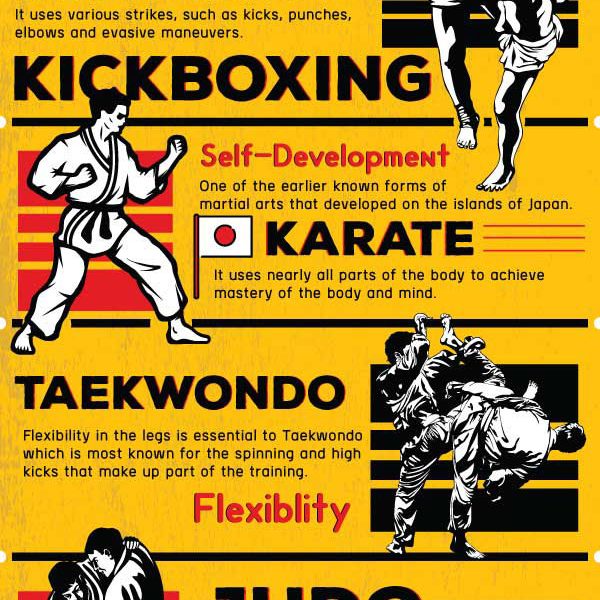Discover The Appealing World Of Martial Arts, Where Age-Old Personalizeds Blend With Contemporary Performance
Discover The Appealing World Of Martial Arts, Where Age-Old Personalizeds Blend With Contemporary Performance
Blog Article
Authored By-Gentry Henson
Enter the old world where martial arts were born out of necessity in diverse areas. Cultures crafted unique fighting styles intertwined with historical contexts. Techniques progressed over centuries through dedicated method and cultural exchanges. Today, contemporary martial arts mix standard elements for maximum performance. Philosophically, martial arts stress technique, self-improvement, and harmony. Respect, humility, and balance are fundamental principles directing experts in the direction of growth and strength. Explore the midsts of this abundant history and ideology to discover the extensive impacts shaping this long-lasting discipline.
Beginnings of Martial Arts
Martial arts came from numerous areas around the world, evolving as practical fight systems to resist dangers. These ancient battling styles were established out of necessity, with each society crafting techniques matched to their one-of-a-kind settings and challenges. From the grappling arts of Jujutsu in Japan to the striking methods of Kung Fu in China, martial arts were deeply linked with the historical, social, and cultural fabric of their respective cultures.
In https://deanqxekq.topbloghub.com/32666260/from-the-streets-to-the-display-the-influence-of-self-defense-in-popular-culture , the samurai class polished martial arts like Kenjutsu, the art of the sword, which later on evolved into the a lot more promoted type of Kendo. At the same time, in Brazil, Capoeira emerged as a blend of dancing and fight, created by enslaved Africans as a way to withstand fascism. Each fighting style brings with it an abundant background and philosophy, showing the values and ideas of individuals that exercised them.
As what do martial arts lessons cost for kids explore the origins of martial arts, you reveal a tapestry of human ingenuity, strength, and the unyielding spirit of warriors throughout time.
Evolution of Methods
With centuries of technique and improvement, combat techniques within numerous martial arts have actually gone through a profound evolution. From old styles like Kung Fu and Martial arts to more modern techniques such as Brazilian Jiu-Jitsu and Krav Maga, the advancement of methods has been driven by a combination of social influences, practical applications, and technical developments.
One substantial element of this evolution is the cross-pollination of strategies in between different martial arts. As an example, techniques from typical Japanese Jiu-Jitsu were included into the development of Judo by Jigoro Kano in the late 19th century. This blending of designs has led to the growth of hybrid martial arts like Mixed Martial Arts (MMA), which integrate components of striking, grappling, and submission techniques.
In addition, the advancement of methods has actually been formed by the boosting focus on performance and effectiveness in battle. Practitioners have continuously sought to refine their techniques via strenuous training, trial and error, and competition, causing the growth of highly specialized and reliable battling designs. Overall, the development of techniques in martial arts mirrors the vibrant nature of combat and the recurring pursuit for improvement and technology.
Philosophical Structures
Exploring the underlying philosophical principles of martial arts offers insight into their core values and guiding ideas. At the heart of lots of martial arts self-controls is the idea of technique itself. By training your mind and body to work as one cohesive unit, you grow self-control that extends past the dojo or health club into everyday life. This self-control incorporates respect, humility, and self-discipline, forming not just your physical capabilities yet additionally your character.
Another fundamental thoughtful structure in martial arts is the concept of continuous self-improvement. The journey of understanding a martial art is relentless, with professionals regularly aiming to better themselves, both literally and psychologically. This focus on growth promotes strength, perseverance, and a development attitude that can be applied to all elements of life.
Additionally, martial arts highlight the value of consistency and balance. Methods are made to utilize a challenger's power versus them, highlighting the principle of yielding and redirecting force instead of meeting it head-on. This ideology encompasses interpersonal relationships, advertising tranquil resolutions and good understanding. By welcoming these philosophical foundations, martial musicians not only boost their fight skills yet likewise grow a way of living centered on individual growth, regard, and harmony.
Conclusion
Finally, the background and ideology of martial arts offer a rich tapestry of practice, discipline, and self-improvement.
Take for example the story of Bruce Lee, who reinvented martial arts by blending various styles and viewpoints to develop his own special form of Jeet Kune Do.
Via commitment and innovation, martial artists continue to push boundaries and inspire others to reach their complete capacity both in combat and in life.
